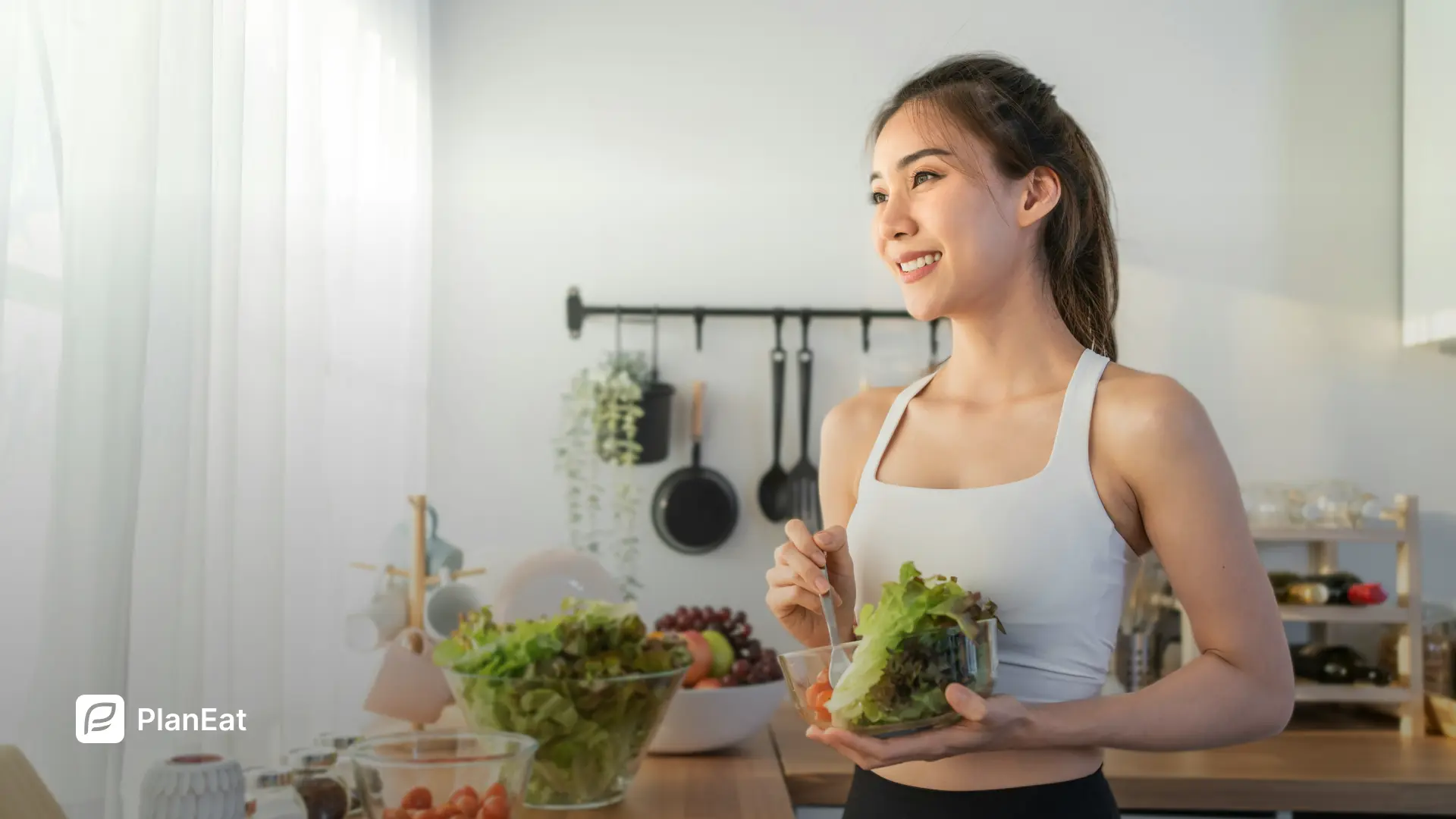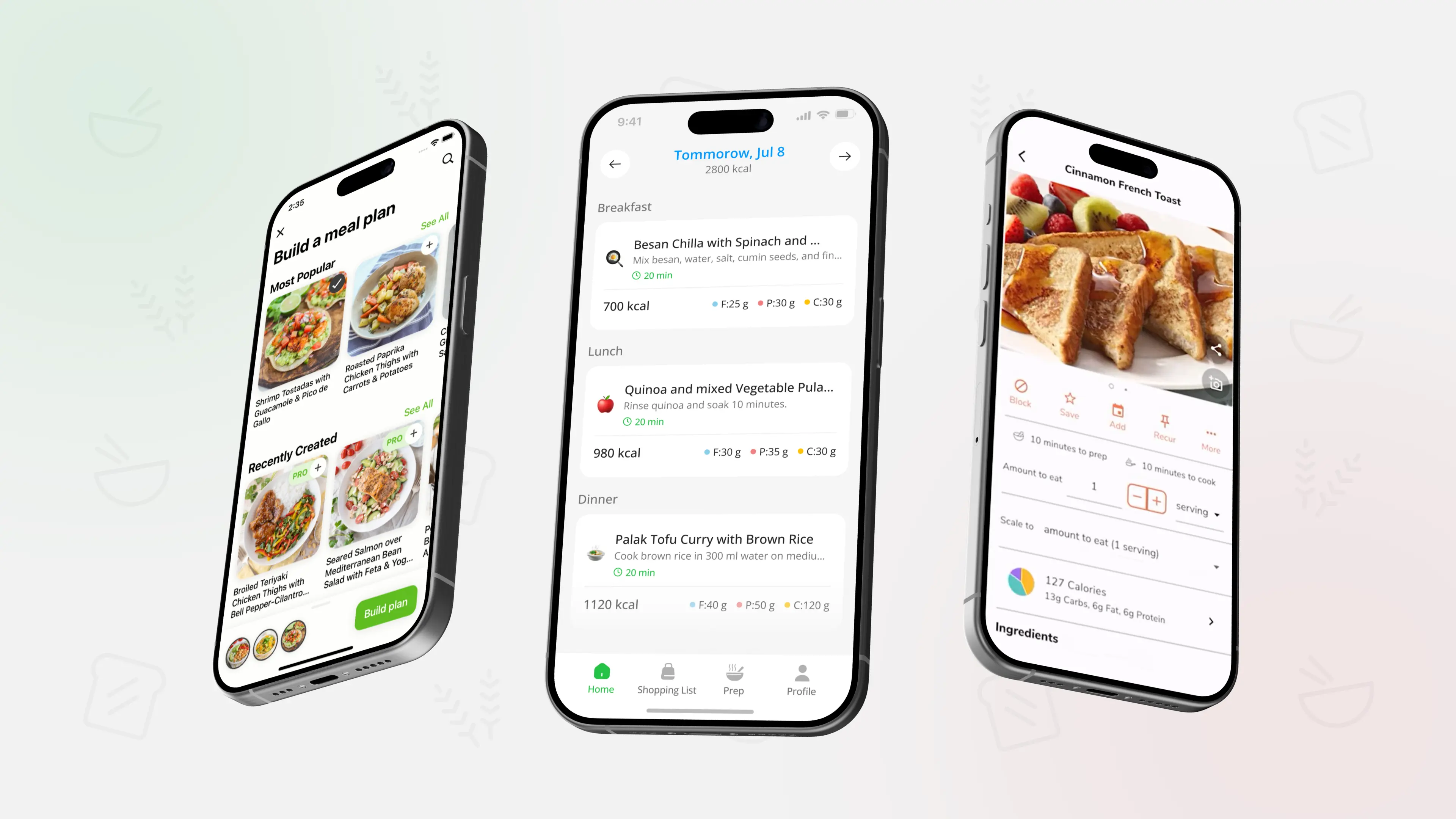Portion Control Made Easy (No Scale Needed)
.webp)
TL;DR: Portion control does not require a food scale or strict calorie counting. Simple visual cues like hand portions and the plate method let you build balanced meals, keep portions consistent, and adjust up or down based on hunger and goals.
Why portion control matters more than strict counting
Portion size is one of the simplest levers you can use for weight loss, weight maintenance, or steady energy through the day. If portions slowly grow over time, even healthy foods can lead to more calories than you intended. If portions are too small, you will feel deprived, overthink food, and often rebound with overeating later.
A realistic goal is not to eat perfect portions every time, but to make your average plate over the week match your needs. That is where simple visual rules help. Instead of weighing everything, you use your own body and plate as your measuring tools.
If portion sizes and food groups feel confusing, it helps to start with a basic visual rule for building meals, like the one in Healthy Eating Basics: Build a Balanced Plate.
Portion control without a scale - simple visual rules
You do not need a scale to get consistent with portions. These visual tools work in most situations at home and when eating out.
Use your hand as a guide
Your hand travels everywhere with you and roughly matches your body size, so it is a useful tool.
- Protein: one palm sized portion of meat, fish, tofu, or similar per meal is a common starting point for most adults. Many people do well with one to two palms at main meals depending on size and activity.
- Carbohydrate side: one cupped hand of cooked grains, pasta, or starchy sides such as rice or potatoes. Very active people may need more, smaller or less active people may be fine with one cupped hand per meal.
- Fats: about one thumb of added fats such as butter, oils, nut butters, or mayonnaise. That can mean a thin spread on toast or a measured drizzle on a salad.
- Nuts and seeds: a small handful as a snack or sprinkle, not an endless bowl. Think of it as one small handful, not a bag.
These are starting points, not fixed rules. You can increase or decrease one category based on your hunger, goals, and how you feel over several weeks.
Use the plate method for main meals
When you have a plate in front of you, use it as a simple map.
- Half of the plate: non starchy vegetables such as leafy greens, broccoli, peppers, carrots, green beans, or salad mixes.
- One quarter of the plate: protein such as chicken, fish, eggs, beans, tofu, or lean beef.
- One quarter of the plate: smart carbohydrates such as brown rice, quinoa, whole grain pasta, potatoes, or beans.
You do not have to be exact. The point is to see clearly if protein and vegetables are missing or if the starchy part has taken over the plate.
Adjust portions for your goals
You can use the same structure and move portions slightly up or down.
- For weight loss: keep the plate structure, but slightly shrink the carbohydrate quarter or the amount of added fats while keeping protein and vegetables generous so meals still feel filling.
- For maintenance: aim to keep the same plate structure most days and adjust portions based on hunger, activity, and how your clothes fit over time.
- For muscle gain: keep vegetables and carbohydrates present, but you may increase protein to one and a half or two palms per main meal.
If you prefer not to plan every portion from scratch, you can use PlanEat AI to generate a weekly meal plan where each meal already has basic calories and macros calculated. You then apply these hand and plate cues at the table so your portions stay aligned with your goals without using a scale.
A simple portion control day you can repeat
Below is an example of a day that uses hand and plate portions. You can reuse this pattern across the week and swap ingredients while keeping the structure.
Breakfast
- One palm of protein: scrambled eggs or Greek yogurt.
- One cupped hand of smart carbs: oatmeal, fruit, or whole grain toast.
- Extra fiber: berries, sliced apple, or a handful of spinach in an omelette.
- Fats: one thumb of butter, olive oil, or nut butter.
Lunch
- Plate method: half the plate salad or mixed vegetables, one quarter grilled chicken, tofu, or beans, one quarter quinoa, brown rice, or whole grain pasta.
- Dressing: about one thumb of olive oil based dressing.
Snack
- One small handful of nuts and a piece of fruit, or
- Cottage cheese or yogurt with some berries.
Dinner
- Plate method again: half vegetables such as roasted broccoli and carrots, one quarter salmon or lentil stew, one quarter potatoes, rice, or whole grain bread.
- Fats from cooking oils kept near one thumb equivalent.
Over a week, this type of pattern matters more than any single meal. You can swap salmon for chicken, lentils for beans, potatoes for rice, and still keep the same visual balance.
If you want to see how a full week of balanced meals might look, you can connect this pattern to full menu ideas in 7-Day Balanced Meal Plan (With Grocery List) and then use the same hand and plate rules to adjust portions.
If this pattern feels realistic, you can save similar days as reusable plans in PlanEat AI. The app keeps the meal structure and grouped grocery list, and you adjust hand sized portions up or down as your hunger and progress change.
Habits that make portion control easier long term
Portion control is not only about what is on the plate, but also about how you eat and set up your environment.
Eat a bit slower
Aim to give yourself at least ten to fifteen minutes for most meals. Put the fork down between bites, take small sips of water, and pause halfway through your plate to check if you are still hungry or just eating on autopilot.
Serve once, plate in the kitchen
Instead of placing serving dishes on the table, plate food in the kitchen and bring only your plate to the table. This makes it easier to notice if you really want seconds rather than automatically refilling.
Pre portion snacks
Dividing snacks like nuts, chips, or trail mix into small containers makes the default portion match what you actually want to eat. Eating directly from a bag makes it much easier to lose track.
Handle restaurant portions deliberately
Restaurant meals are often larger than what you would serve yourself at home. You can share an entree, ask for a to go box and set aside half at the start, or focus on eating a palm or two of protein, plenty of vegetables if available, and a moderate portion of starch.
Support portion control when cravings hit
If late night or afternoon sugar cravings are your main challenge, pairing these habits with strategies from How to Stop Craving Sweets All the Time can help. It is easier to respect portions when your energy and appetite feel more stable across the day.
Over time, these small habits work together with your visual portion rules so you do not have to think about every bite.
FAQ:
What is the difference between a portion and a serving
A serving is a standard amount listed on labels or in guidelines, such as one cup of cooked pasta. A portion is how much you actually put on your plate and eat. Portion control is about choosing portions that make sense for your body and goals, not trying to match every label serving exactly.
How do I know if my portions are too small
If you are constantly thinking about food, feel light headed, or arrive at the next meal uncomfortably hungry on most days, your portions may be too small. Try adding a little more protein or smart carbohydrates to main meals and watch how your energy, hunger, and mood respond over at least one to two weeks.
Can I use hand portions if my hands are very small or very large
Yes, but remember that hand based methods are guides, not exact rules. Smaller hands usually match smaller bodies that need fewer calories, and larger hands often match larger or more active bodies. You can still adjust portions over time if your weight, energy, or hunger suggest that the default is not quite right.
How do I practice portion control when eating out
Use the same visual rules. Look for a source of protein about the size of your palm or a bit more, add vegetables where possible, and treat fries, bread, or desserts as smaller shared portions instead of automatic add ons. You do not have to be perfect, but aiming for this pattern most of the time helps.
Is portion control enough for weight loss
For many people, consistent portion control plus mostly whole foods is enough to see gradual progress, especially if combined with movement and reasonable sleep. If you have medical conditions, take medications that affect weight, or have a significant amount of weight to lose, talk to a health professional for extra guidance.
Educational content only - not medical advice.
Portion control without a scale
Use your hand and plate as built in measuring tools. Keep protein and fiber on most plates, use smaller portions of calorie dense foods, and repeat a simple daily pattern so portion control feels natural instead of strict.


.webp)
.webp)
.webp)
.webp)
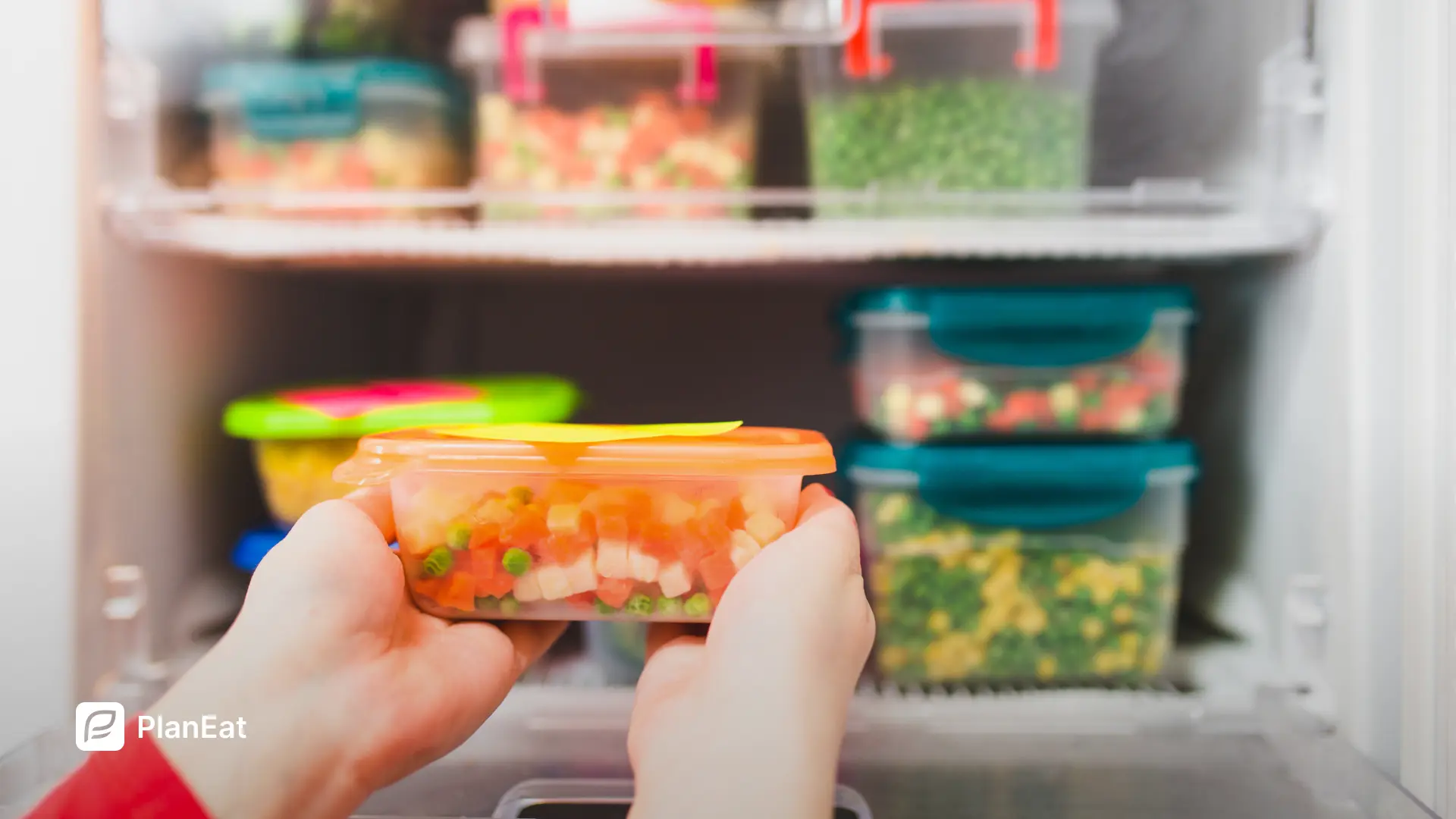
.webp)
.webp)
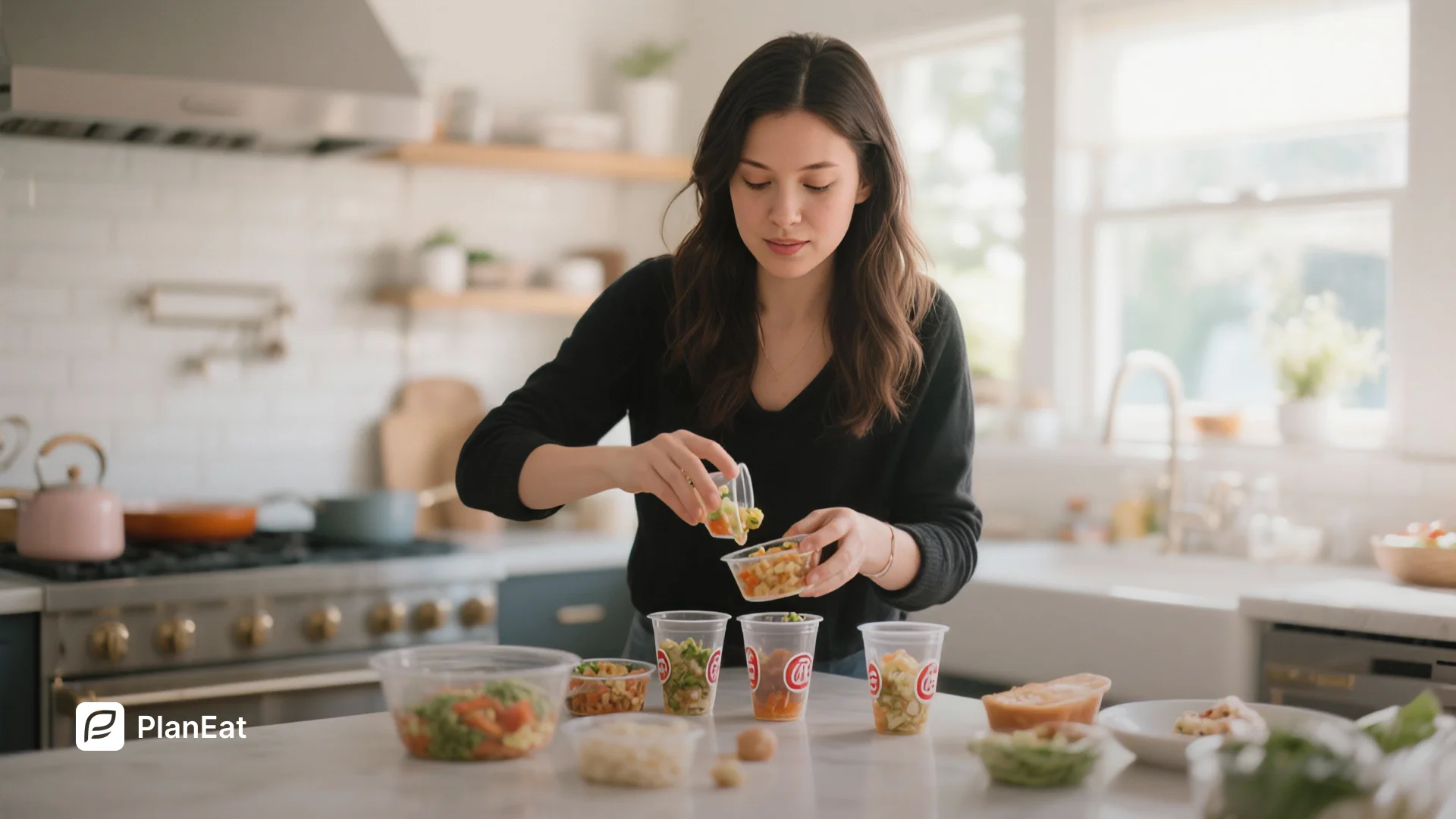
.webp)
.webp)
..webp)
.webp)
.webp)
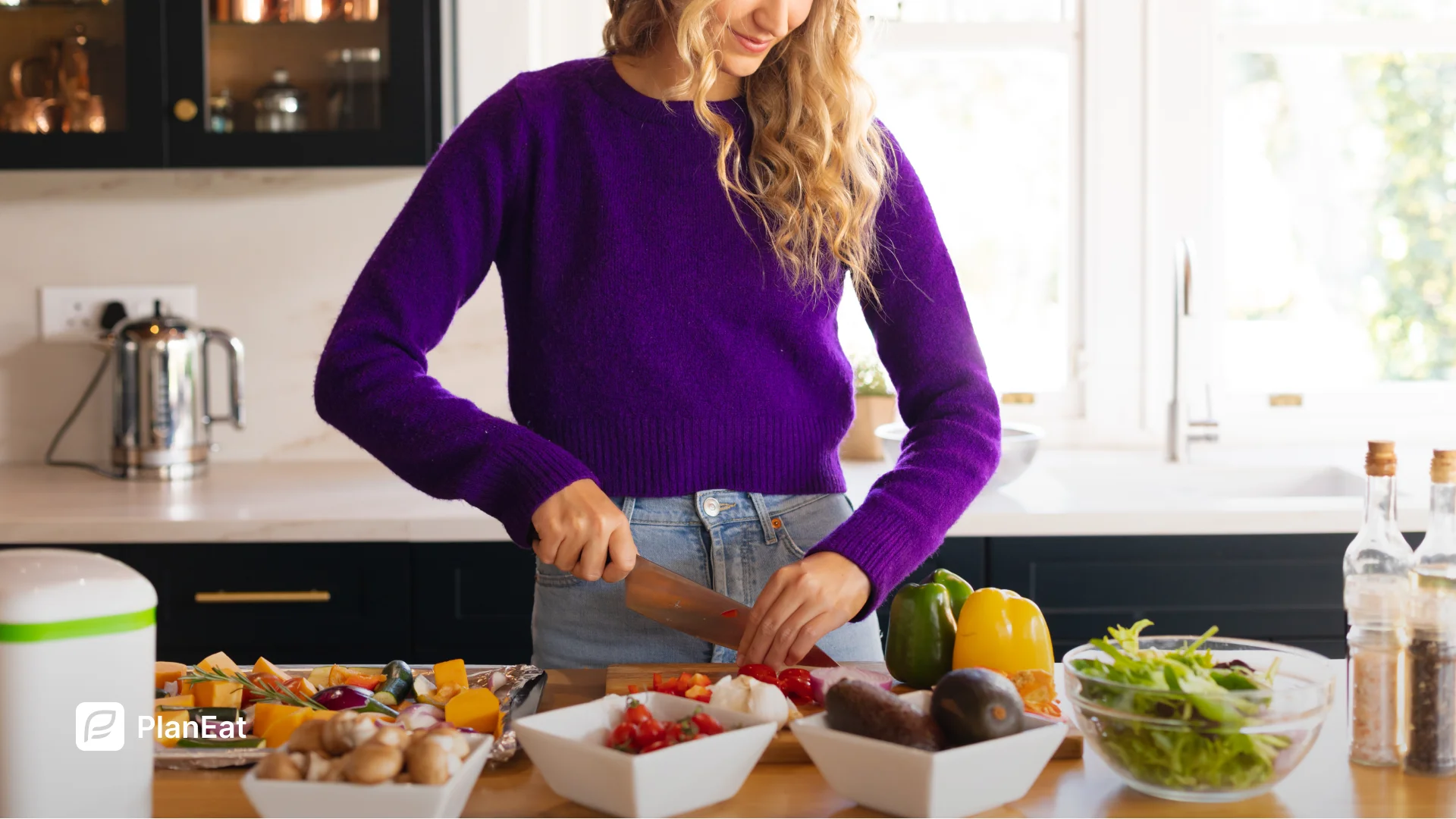
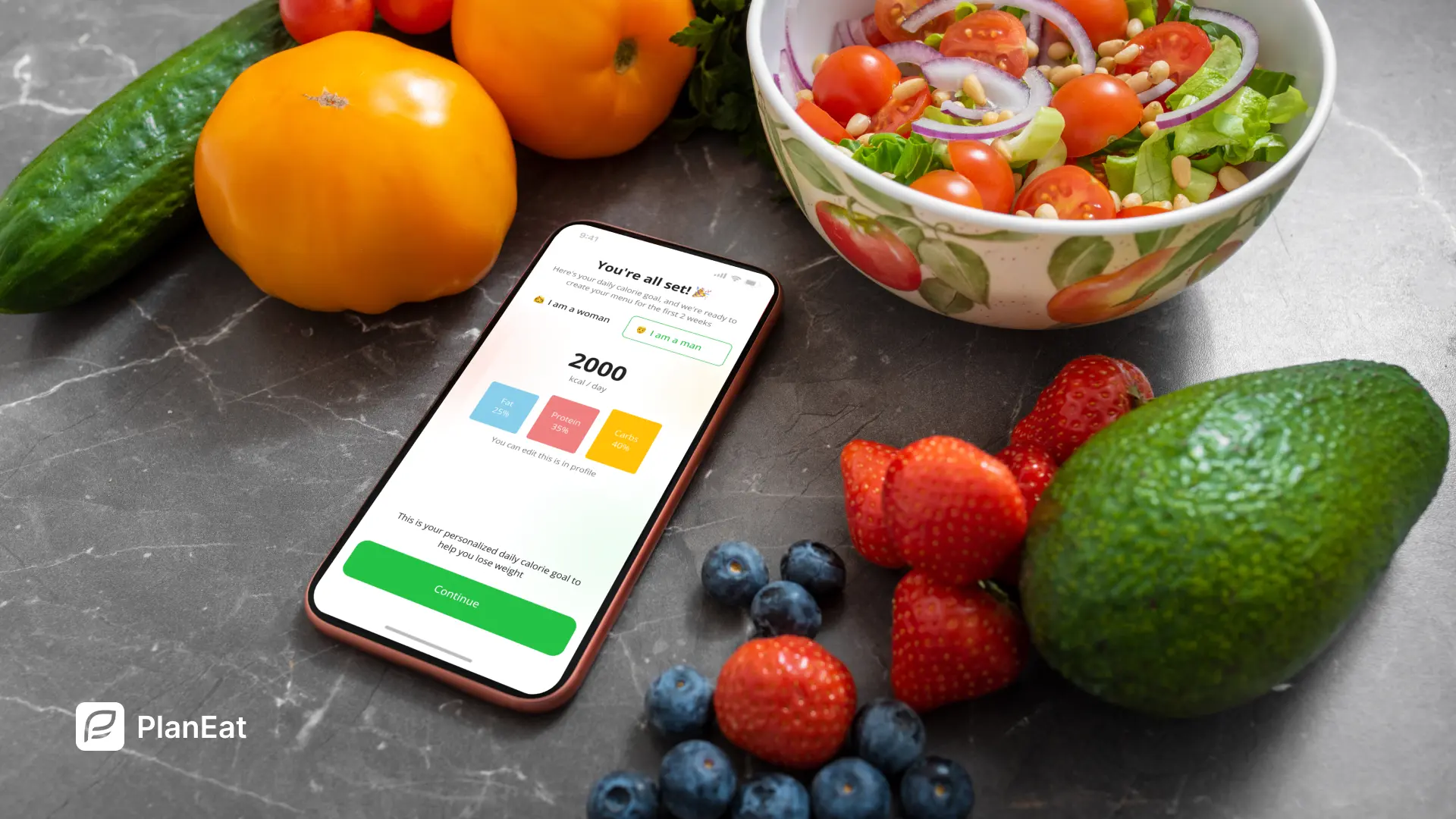
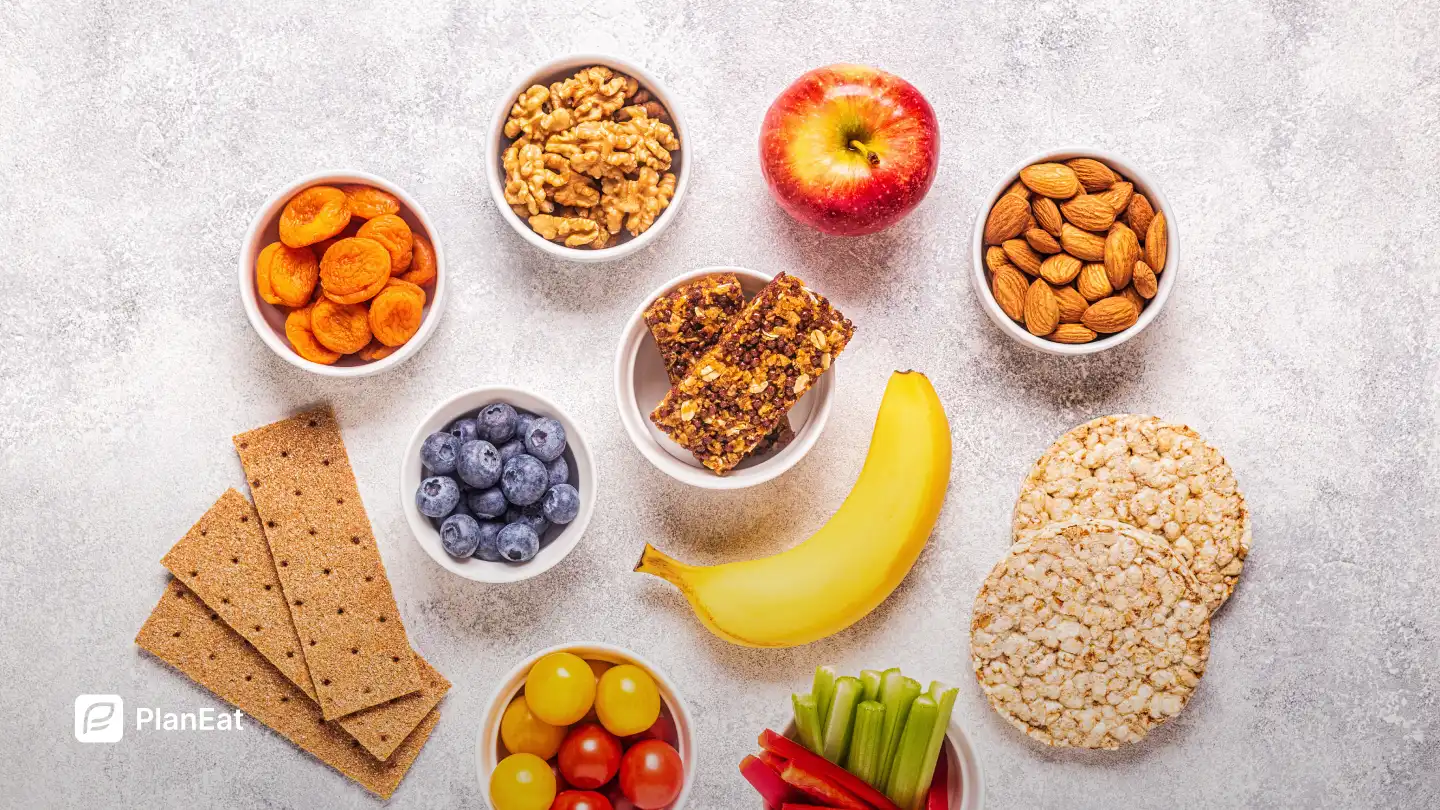
.webp)


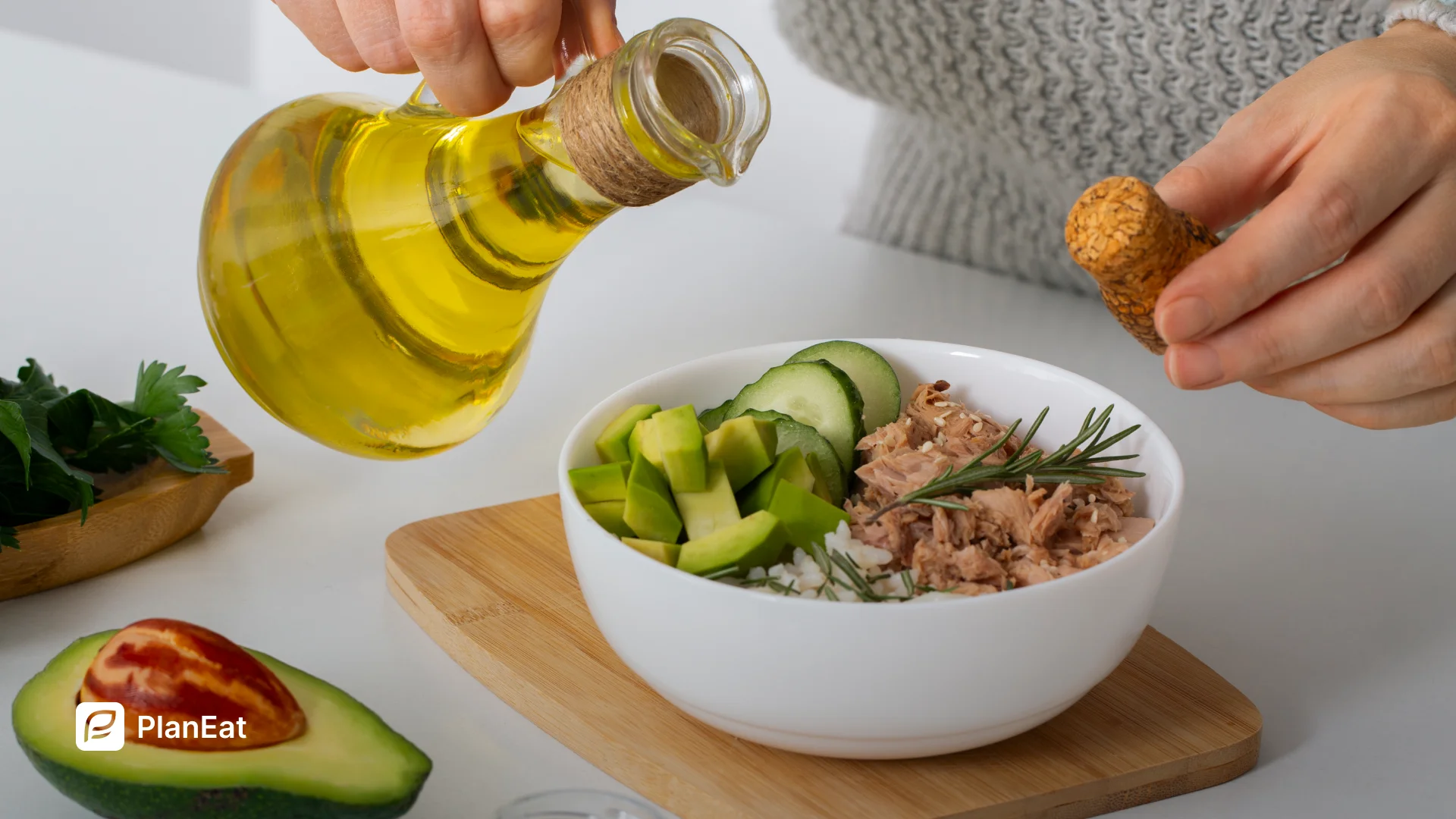
.webp)



.webp)
.webp)
%20%2B%207%E2%80%91Day%20Menu.webp)
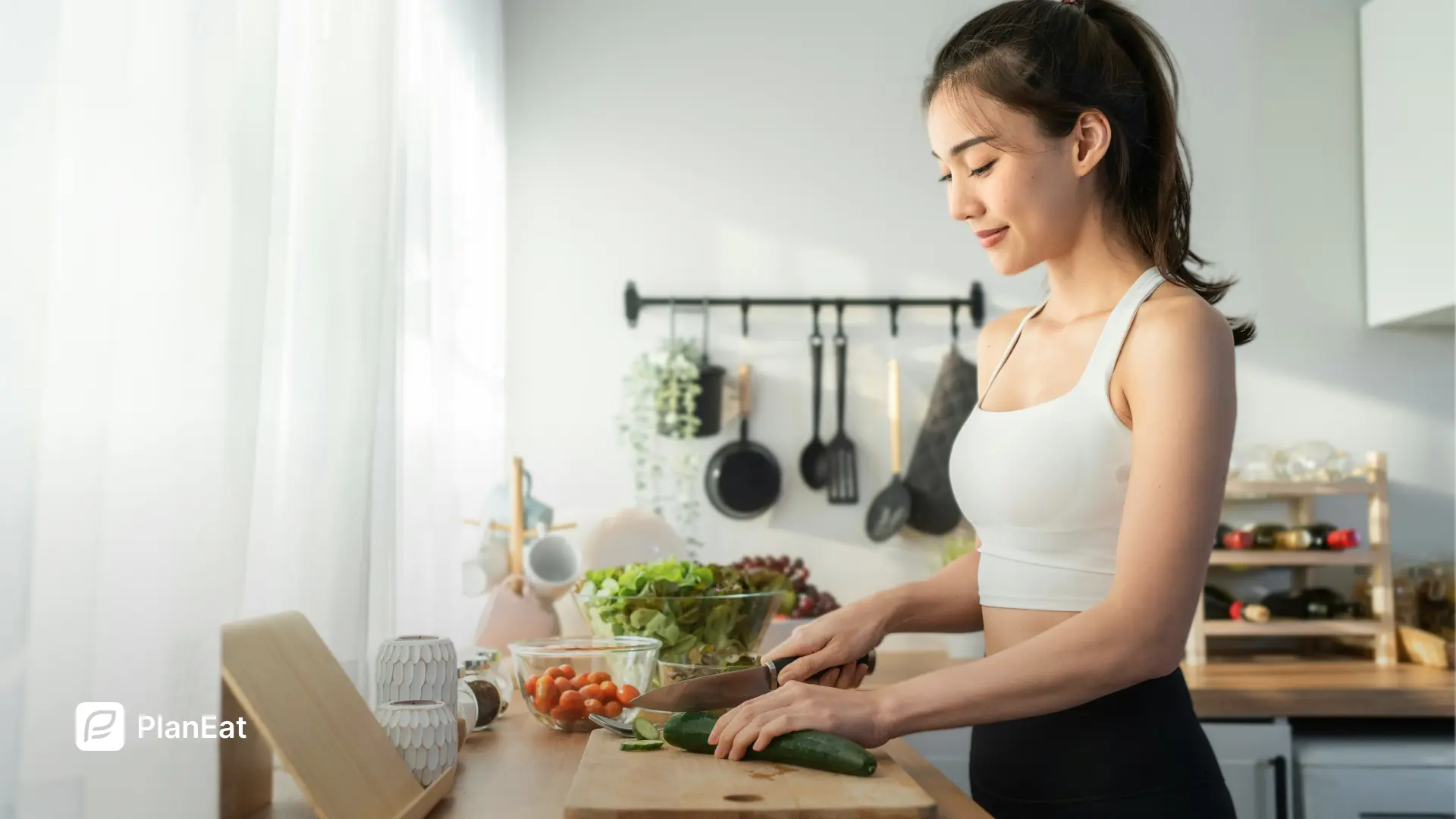



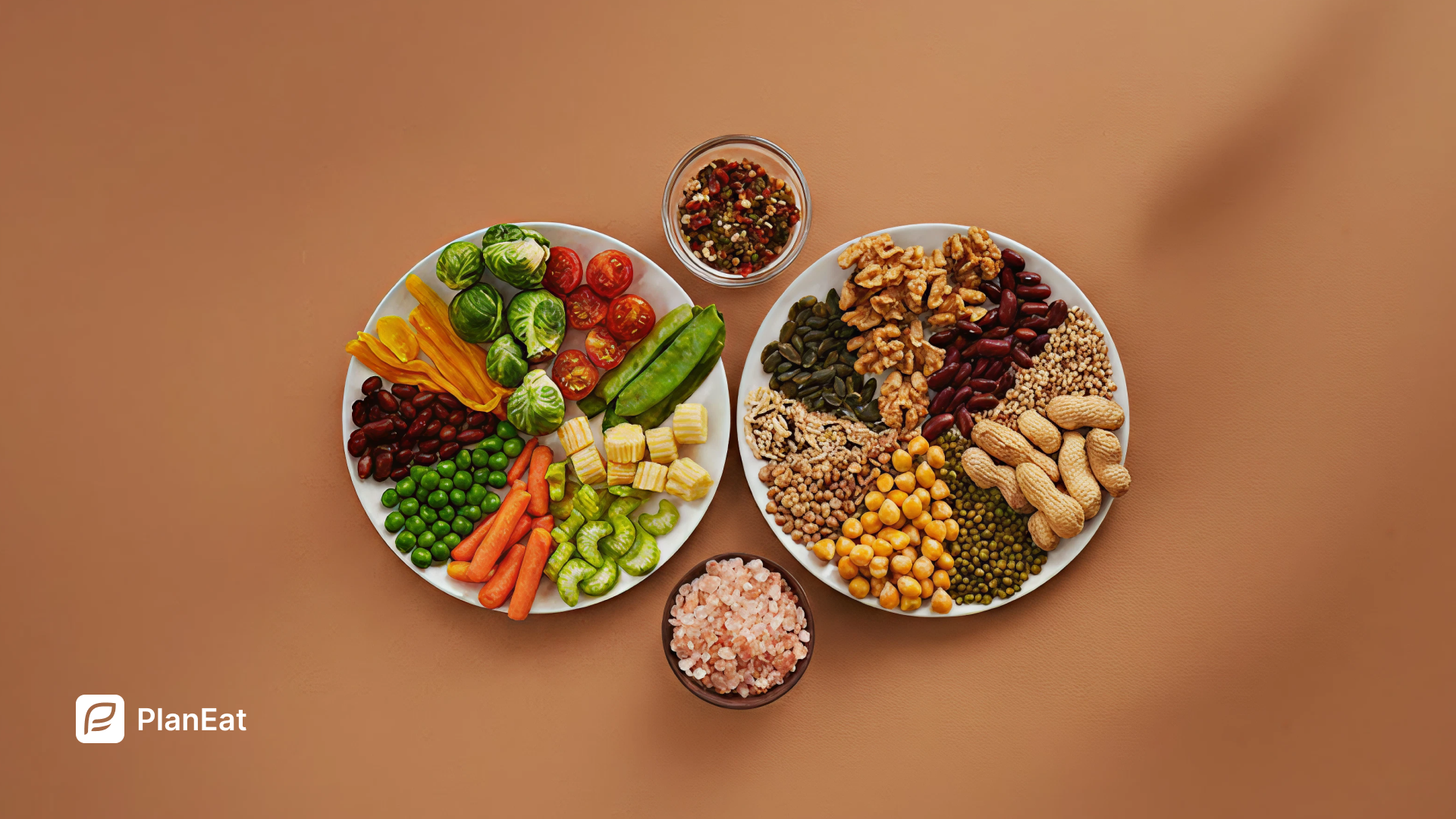
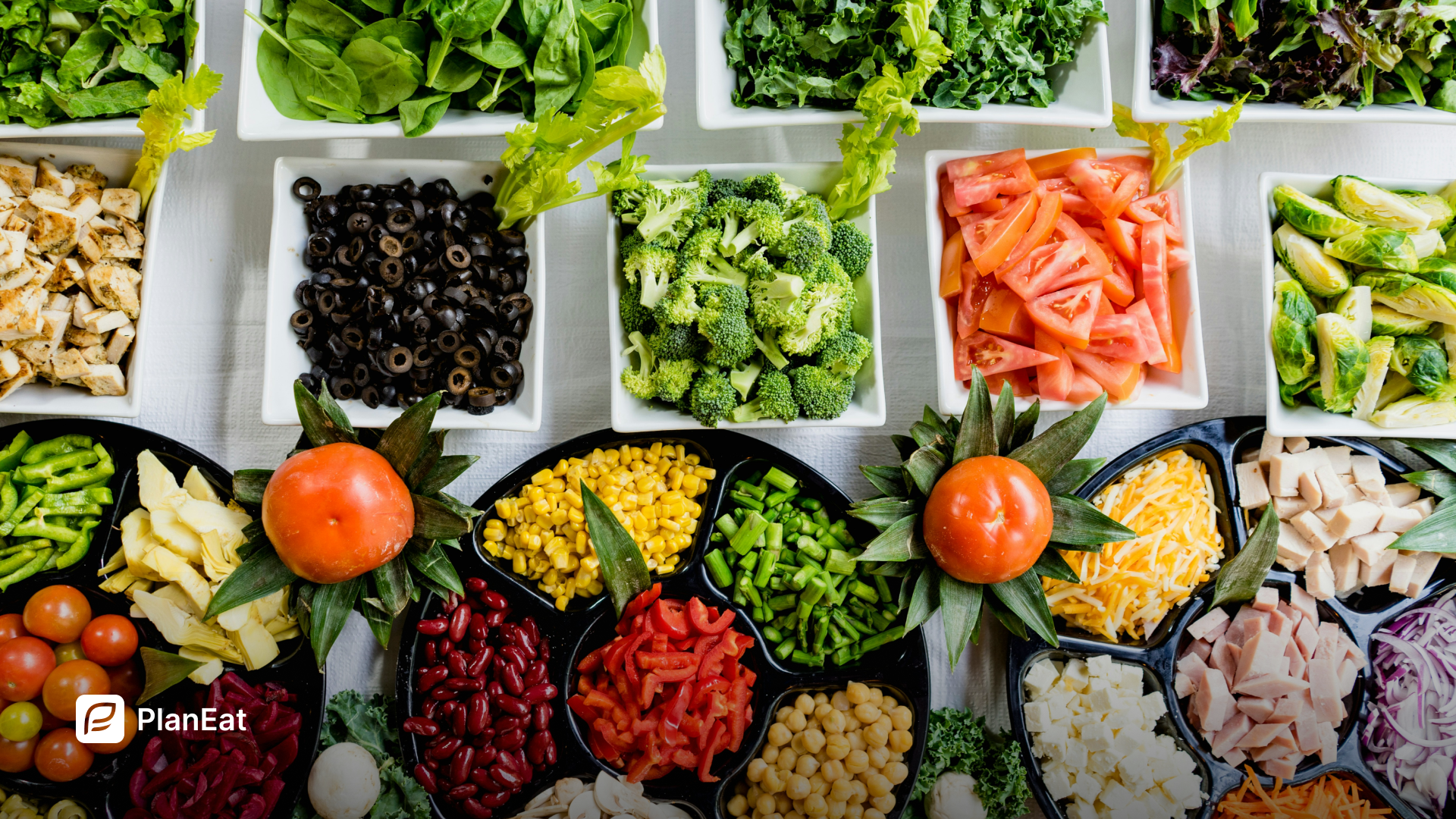
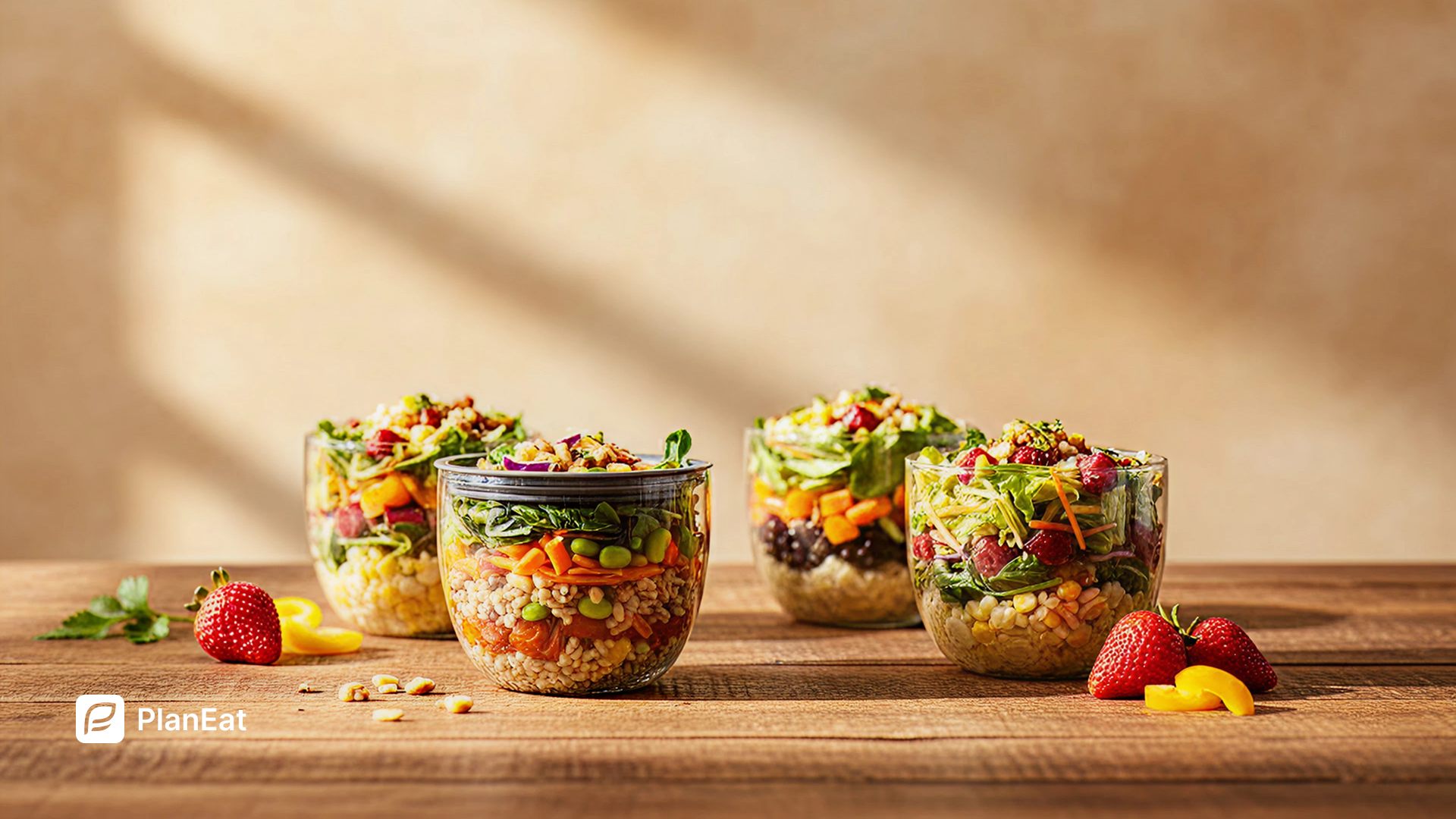

.webp)
